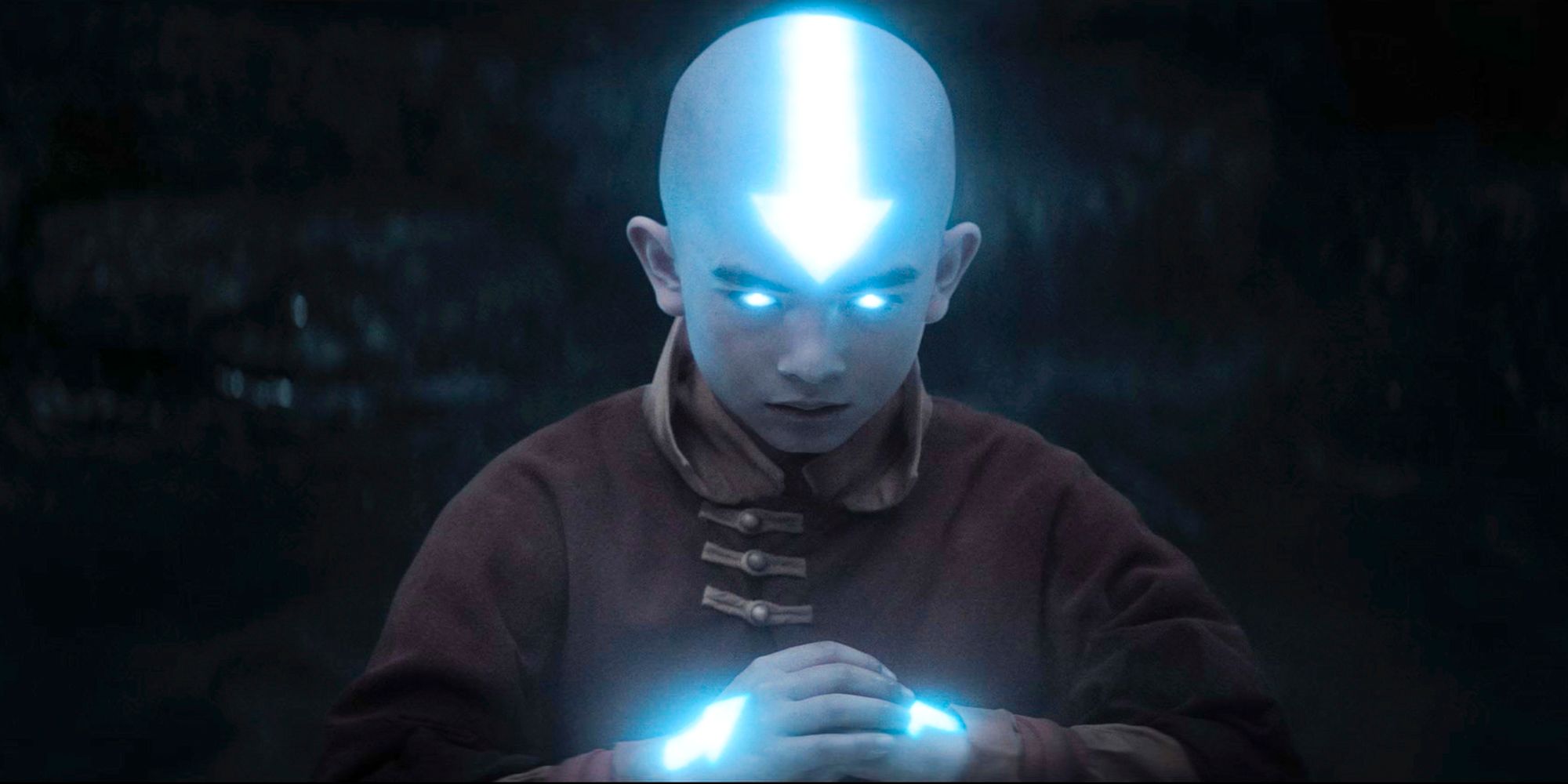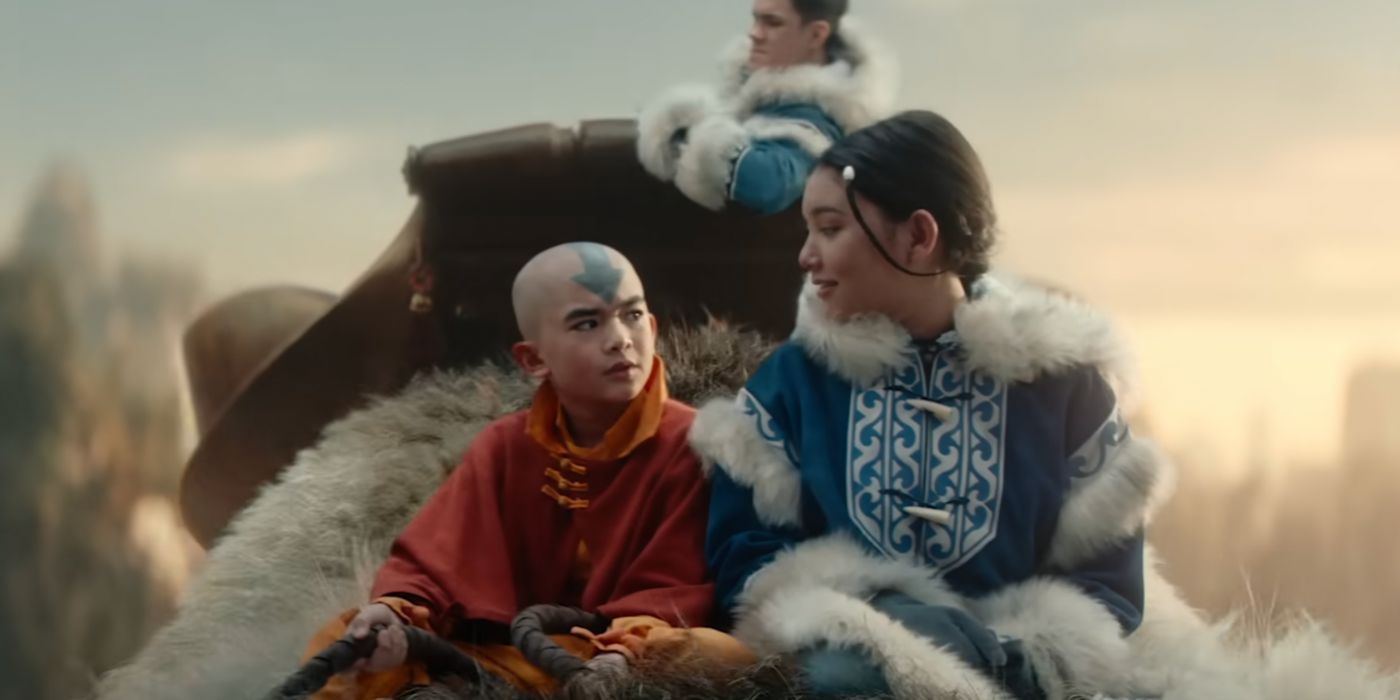Netflix's Avatar: The Last Airbender Condenses Aang's Vital Arc into a Single Episode
Witness Aang's crucial journey condensed into a single episode on Netflix's adaptation.
Netflix's Avatar: The Last Airbender took a smart approach by resolving Aang's main storyline in just one episode instead of spreading it out over the season. The pilot episode closely follows the original animated series, with the only major difference being a cold open showing Sozin's genocide of the Air Nomads. The story then unfolds as Katara and Sokka from the Water Tribe discover a mysterious boy trapped in an iceberg.
The show's creators, Michael Dante DiMartino and Bryan Konietzko, had spent two years working on the live-action adaptation for Netflix before announcing their departure due to creative disagreements. This surprising news left fans and showrunner Albert Kim feeling uncertain, with Kim even questioning if there was a way to improve on the beloved original series. Some fans may argue that certain changes, like the quicker resolution of Aang's character development, deviate too far from the original storyline.
In The Original, Aang Runs From His Responsibility As The Avatar
Aang and Katara looking sad by the fire in Avatar: The Last Airbender. - In The Original, Aang Runs From His Responsibility As The Avatar
The spirited and fun-loving Aang in the animated Avatar series is depicted struggling with the fears of a child who is unwillingly burdened with a responsibility. This struggle and the mistakes he makes are crucial in shaping Aang's character and his journey towards becoming a mature and complete Avatar. In the pilot episode, when Katara asks Aang about the previous Avatar, he denies having any knowledge of him. In "The Storm" episode, Aang confesses to Katara that he was so scared of his Avatar duties and leaving behind his home and Gyatso that he ran away.
In the Netflix pilot, an attempt is made to portray Aang as a playful kid through a soliloquy at the Southern Air Temple where he expresses his love for playing airball, eating banana cakes, and goofing off with friends. He admits that he doesn't see himself as someone capable of stopping the Fire Nation. However, the moments of Aang wanting to play with the Water Tribe kids and entertaining the Kyoshi Island kids are too brief to capture the childlike spirit that fans have grown to love.
The Live-Action Focuses Instead On Building Aang's Role As The Avatar
Aang's genuine expression of fear, with tears in his eyes, is relatable: "I don't wanna leave. I don't want the responsibility. . . . I'm scared." Despite his fears, instead of avoiding them, Aang chooses to take a ride with Appa to clear his thoughts "where things always make more sense." As they head back, a storm suddenly overtakes them.
Aang in avatar state ocean spirit close up from Avatar the last airbender Gordon Cormier as Aang - The Live-Action Focuses Instead On Building Aang's Role As The Avatar
The live-action adaptation of Aang's story focuses more on his Avatar duties rather than his personal growth as a character. The flaws and challenges that made the animated Aang relatable and interesting are missing in this version. In the Netflix show, Aang is already mature and fully accepting of his responsibilities, leaving little room for character development. Unlike the original series, where becoming the Avatar meant learning important life lessons and experiencing internal growth through interactions with friends and foes, the live-action adaptation primarily showcases the external aspects of Aang's role as the Avatar.
Why Aang's Character Change Is Bad For The Netflix Avatar Show
Aang, Katara and Sokka on Appa in Avatar: The Last Airbender Netflix live action - Why Aang's Character Change Is Bad For The Netflix Avatar Show
In the first episode, Aang confidently declares, "I'm the Avatar, and this is just the beginning." This marks a significant departure from the original series, where Aang's character development was more gradual. The Netflix version portrays Aang as less conflicted and more self-assured from the start. His absence for a century is simply due to being in the wrong place at the wrong time, with little inner turmoil or growth shown.
The shift in Aang's character can be attributed to show creator Albert Kim's aim to strike a balance between appealing to the original's younger audience and meeting the expectations of a mature, serialized Netflix drama. Kim emphasized the need for the show to appeal to both younger viewers and fans of more adult-oriented series like Game of Thrones. This required the portrayal of Aang to feel more grounded, mature, and adult in nature.
Avatar, which first aired in 2005, has a wide range of fans of all ages. The show delves into philosophical ideas and the harsh realities of war through the perspective of a child who has lost everything he knew. Despite a jarring scene of a man burning alive in the pilot episode and a more serious Aang who cannot fully embrace his playful side, the show manages to maintain its intrigue. While some of the humor and charm may have been toned down, characters like Zuko and Iroh still bring a light-hearted touch to the series. Despite these changes, Gordon Cormier's portrayal of Aang remains captivating, building anticipation for season 2 of Avatar: The Last Airbender.
Avatar: The Last Airbender is streaming on Netflix.
Editor's P/S:
The article provides an insightful analysis of the character changes made to Aang in Netflix's "Avatar: The Last Airbender" adaptation. The author effectively highlights the departure from the original animated series, where Aang's gradual character development and inner struggles were central to his journey. The Netflix version, however, presents Aang as more mature and self-assured from the outset, which may diminish the emotional depth and relatability that made the original character so beloved.
While the article acknowledges the show creator's intention to balance appeal to both younger and mature audiences, it argues that the changes to Aang's character may come at the expense of the show's overall impact and emotional resonance. The absence of Aang's initial reluctance and fear undermines the weight of his responsibilities and makes his transformation seem less earned. Ultimately, the article suggests that the Netflix adaptation may have sacrificed some of the essential elements that made the original animated series so captivating and meaningful.














